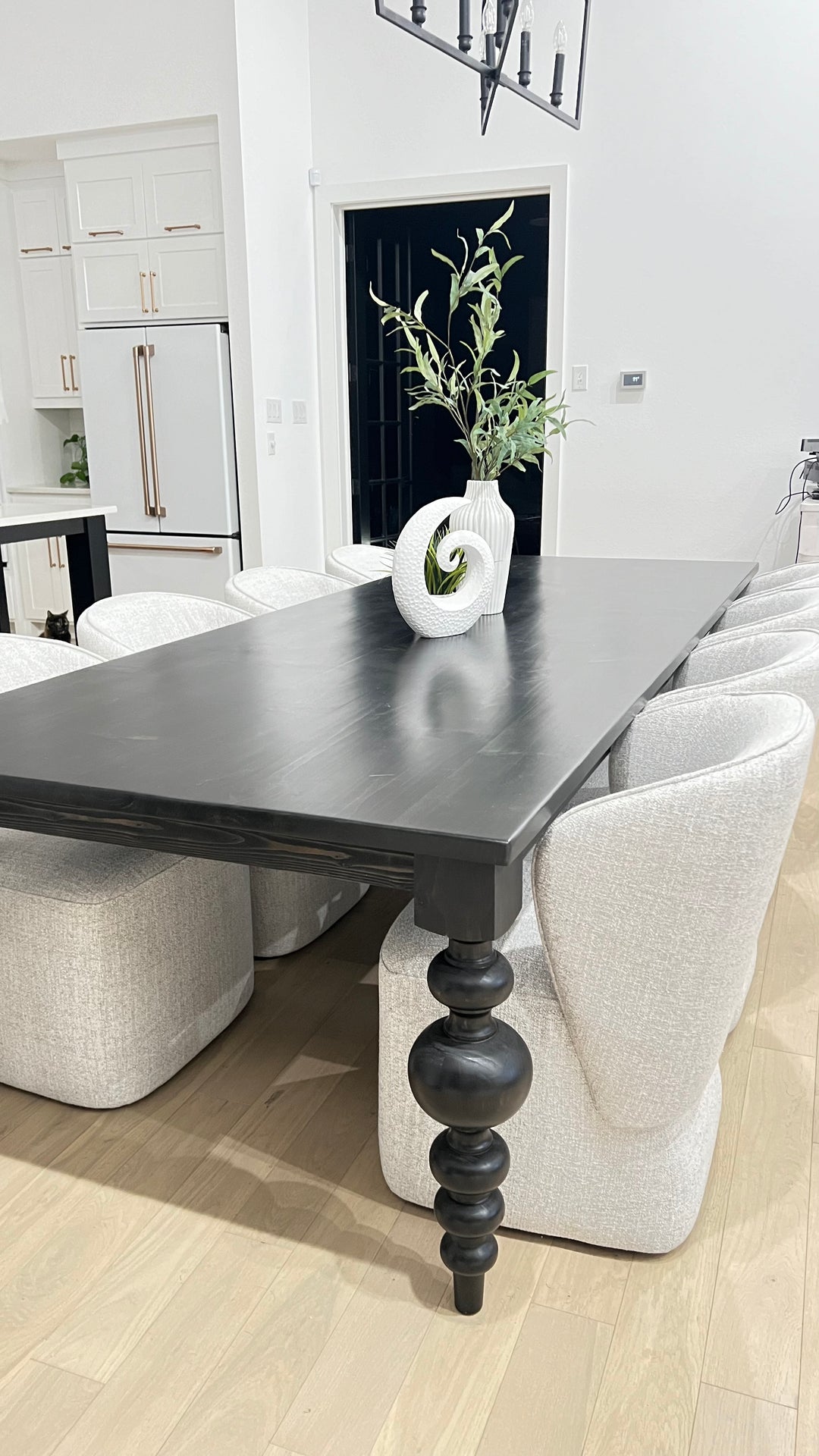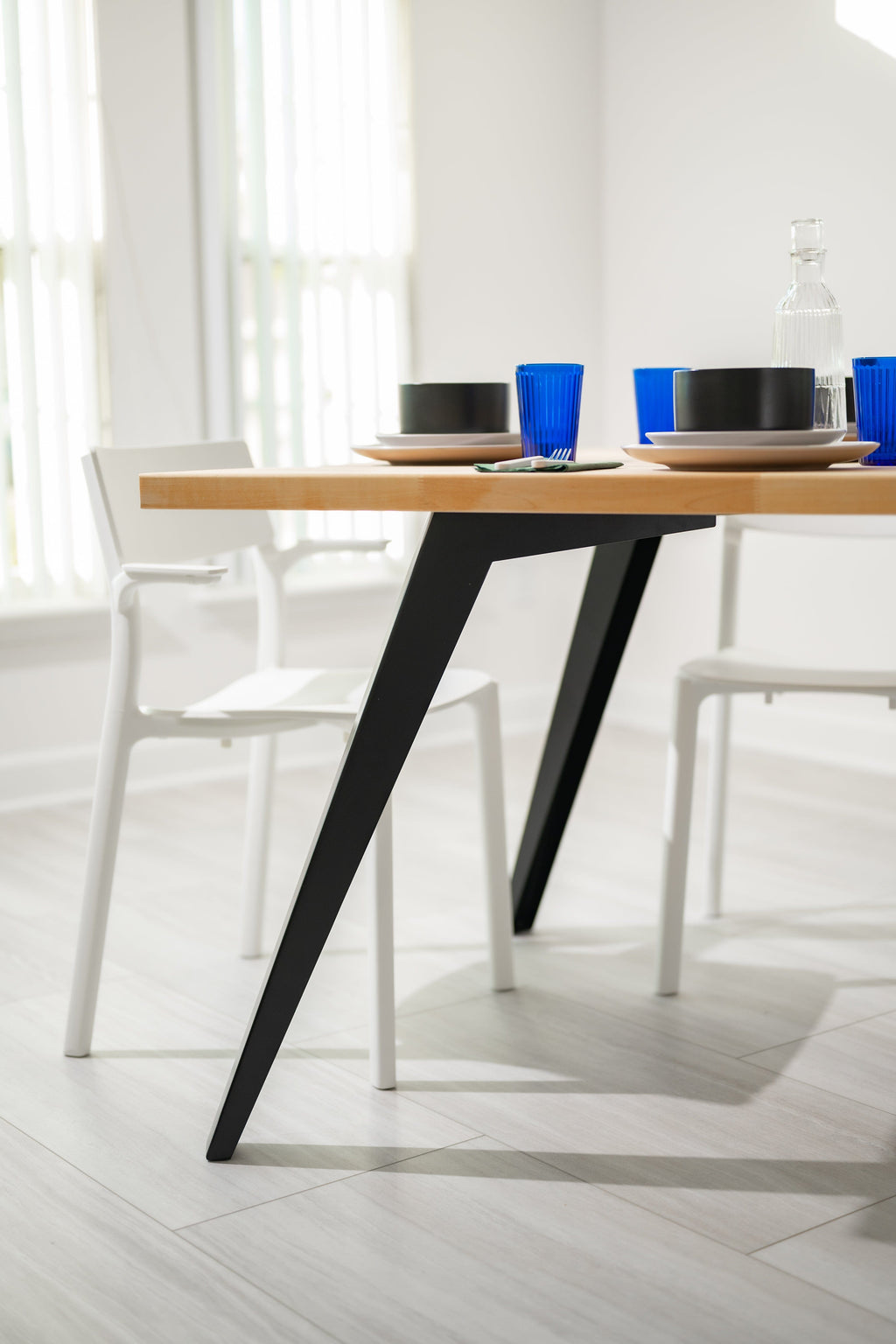Tips for Installing Dining Room Table Legs for a Modern Look
Wiki Article
Exactly How to Choose the Perfect Dining-room Table Legs for Your Home Decor
Choosing the excellent eating room table legs is a nuanced process that needs mindful factor to consider of different aspects, including your space restrictions, visual choices, and functional needs. The interplay in between dimensions, styles, and materials can significantly influence the atmosphere of your eating location, making it important to approach this choice methodically.Assess Your Dining Space
Examining your dining space is essential for selecting the right table legs that match both looks and capability. Begin by measuring the measurements of your eating area, including ceiling height, flooring area, and proximity to other furniture. This details will aid identify the proper dimension and height of your dining table, which directly affects the selection of table legs.Next, take into consideration the design and format of your eating room. An open-concept layout might profit from table legs that supply visual lightness, such as slender steel or acrylic options. Alternatively, a more traditional setting might require tough wooden legs that supply a feeling of permanence.
Evaluate the existing color scheme and materials in your eating area. Integrating the table legs with these elements produces a cohesive look that enhances the general decor. Additionally, think of the capability needed in your area. If you frequently host big gatherings, consider legs that provide additional assistance and stability.
Eventually, a thorough evaluation of your dining area will assist you in making an informed choice, making sure that your table legs not just improve the aesthetic charm but also offer sensible objectives.
Consider Your Design Preferences
When choosing dining-room table legs, it is important to assess your individual style choices, as they significantly affect the overall visual of your dining area. Your selection of table legs can either enhance or comparison with existing design, making it vital to align them with your preferred indoor design motif.If your home leans in the direction of a contemporary visual, consider smooth metal or minimalist wood legs that offer a clean, clean look. For an extra conventional approach, luxuriant wood legs with intricate carvings can include a touch of style and sophistication. Industrial designs gain from durable, resources such as reclaimed wood and steel mixes, showing a tough charm.
Additionally, farmhouse and rustic designs usually prefer sturdy, beefy legs that stimulate a sense of warmth and comfort. Conversely, if your décor is diverse, you might select non-traditional shapes or a mix of materials to create visual rate of interest.

Evaluate Product Options
The choice of product for eating area table legs plays a pivotal role in both longevity and aesthetic appeal. Typical products consist of timber, steel, and composite alternatives, each offering distinct characteristics that can affect the total appearance and longevity of your table.Wood is a traditional option, known for its heat and versatility. Hardwoods like oak and walnut supply phenomenal toughness and can be completed in different stains to match any decor. Softwoods like yearn are much more prone to dents and scratches, making them less suitable for high-traffic areas.
Metal legs, often crafted from steel or aluminum, emanate modernity and commercial charm. They are highly sturdy and immune to wear, making them suitable for family members with kids or regular gatherings (dining room table legs). In addition, steel can be finished in numerous shades, boosting the customization possibilities
Composite materials, such as MDF or laminate, offer price and diverse styles. While usually less durable than solid wood or steel, they can still offer a trendy appearance and are frequently easy to keep.
Ultimately, the material you choose should straighten with your way of living, visual choices, and the degree of use your table will certainly experience.
Determine Height and Size
Picking the ideal height and dimension for your eating area table is vital for both performance and convenience. The conventional elevation for dining tables commonly varies from 28 to 30 inches, enabling adequate legroom for the majority of people when seated. It is crucial to take into consideration the measurements of your dining room and the types of chairs you intend to use.
Additionally, think about the proportions of your eating area. A larger table in a spacious location can produce a grand setting, while a smaller sized table functions well in even more intimate setups. Eventually, the appropriate height and dimension will harmonize with your total decor and improve the dining experience for you and your visitors.
Explore Customization Opportunities

Furthermore, the layout of the legs can be tailored to fit numerous styles, such as rustic, modern-day, or industrial. For instance, tapered legs can stimulate a mid-century modern-day feel, while chunky, block-style legs may reverberate with traditional or farmhouse style.
House owners can additionally explore color finishes, from all-natural wood stains to repaint, allowing them to match or comparison with the tabletop and surrounding design.
Moreover, go to this website leg height can be gotten used to accommodate specific seating arrangements or individual choices, boosting both comfort and performance.
Last but not least, unique decorations, such as makings or decorative braces, can even more customize the table legs, making the eating experience not just a dish but a declaration piece in the home. By thinking about these modification alternatives, homeowners can create a dining area table that genuinely reflects their uniqueness.
Final Thought
Selecting the suitable eating space table legs requires mindful consideration of various variables, consisting of the measurements of the dining room, design choices, material longevity, and preferred elevation. Personalization options additionally improve the capability to attain a cohesive visual that matches the general decoration. By systematically examining these components, house owners can ensure that the selected table legs not only accomplish functional requirements however also contribute positively to the dining experience and atmosphere of the home.Picking the perfect dining room table legs is a visit this site nuanced procedure that needs careful consideration of numerous aspects, including your area restraints, aesthetic choices, and functional requirements.Assessing your eating room is vital for selecting the right table legs that complement both looks and performance.When figuring out dimension, measure the area where the table will certainly be put to ensure it fits conveniently, enabling for at least 36 inches of clearance around the table for easy movement. A larger table in a spacious area can develop a grand atmosphere, while a smaller sized table works well in more intimate settings.Selecting the ideal dining space table legs calls for mindful factor to consider of numerous aspects, consisting of the measurements of the eating room, design choices, material toughness, and preferred elevation.
Report this wiki page